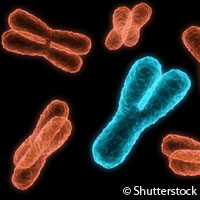EU-funded study discovers new genes for rare inherited diseases
An international team of EU-funded researchers has identified two new genes connected with hereditary renal diseases. The team of scientists, from Canada, Germany, India, the Netherlands, Pakistan and the United States, were given a boost of funding from the SYSCILIA project, part of the 'Health' Theme of the EU's Seventh Framework Programme (FP7). Altogether the team studied 850 proteins likely to be involved in 3 genetic ciliary diseases: nephronophthisis, Joubert syndrome and Meckel-Gruber syndrome. They mapped how these proteins interact to predict which of them play a crucial role in the diseases, something which led to the double gene discovery. Ciliary diseases are caused by genetic defects to a part of the cell called the cilium. The cilium is crucial as it is involved with cell signalling pathways during cell development in different parts of the body. Cilia are protrusions of cells that have different functions: for example, cilia in the respiratory tract take care of transporting mucus, whereas cilia in the kidneys sense urine flow. Improper cilia development can result in various diseases. However our knowledge of cilia composition, wiring, dynamics and the associated signalling pathways of the corresponding molecular building blocks and associated protein networks remains very limited. Writing in the journal Cell, the team explains how they conducted their research on a family in Pakistan, in which four siblings had Joubert syndrome: they combined gene-mapping techniques with the use of a protein network map, thereby identifying the TCTN2 gene, which when defective, leads to onset of the condition. The syndrome occurs when a child receives the gene from each parent. Joubert syndrome affects brain functioning and results in intellectual deficits, movement and coordination problems, and other symptoms such as kidney and eye problems. This syndrome is reported to affect approximately 1 in 100,000 children, although scientists believe this figure could be way off the mark since the disease could be affecting far more children worldwide. So far, 10 genes have been connected with Joubert syndrome. One of the study authors from Canada's Centre for Addiction and Mental Health (CAMH) previously discovered the CC2D2A gene, which accounts for about 9% of Joubert syndrome cases. 'A defect in any aspect of this molecular pathway may have very similar effects at the clinical level,' comments Dr John Vincent. The other ciliopathy gene identified in this study - Atxn10 - leads to the condition called nephronophthisis, also associated with kidney and eye problems. This study moves forward gene research by taking an innovative network approach. Some of the researchers were working on the mapping of a network of potential proteins related to ciliopathies that interact on common pathways, as an approach to identify the disease genes. Another study author, Rachel Giles from University Medical Center (UMC) Utrecht in the Netherlands, comments on this new way of studying networks of proteins and how it could lead to future discoveries of disease genes: 'It's a new language to find genes. The standard methods to find genes in rare genetic diseases in small families are often fruitless. Our method, combining systems biology and biochemistry, has succeeded in this case. It offers families with ''orphan diseases'' and their physicians help to diagnose and understand the natural course of the disease. Moreover, this method could also be used to find genes for more common diseases such as diabetes or obesity.' The aim of the SYSCILIA project is to identify the molecular mechanisms characterising cilium function, and the discrete perturbations associated with dysfunction caused by mutations in inherited ciliopathies, applying a systems biology approach. The project consortium, made up of researchers from 16 research institutions from France, Germany, Ireland, Italy, the Netherlands, the United Kingdom and the United States, aims to generate a comprehensive stream of content-rich quantitative data towards systemic analysis of ciliary function. Since its launch in June 2010, the SYSCILIA project has already yielded considerable results. Last December, scientists studying dogs discovered a novel gene that triggers primary ciliary dyskinesis (PCD), a rare genetic respiratory disease found in both humans and canines. The SYSCILIA project runs until 2015.For more information, please visit:SYSCILIA:http://syscilia.org/index.shtml
Countries
Canada, Germany, India, Netherlands, Pakistan, United States



